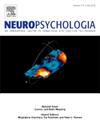Motor-based and memory-based predictions distinctively modulate sensory processes
IF 2
3区 心理学
Q3 BEHAVIORAL SCIENCES
引用次数: 0
Abstract
Action suppresses the neural responses to its sensory feedback. The phenomenon, termed action-induced suppression, highlights the predictive processes in sensorimotor integration but remains controversial regarding the underlying mechanisms. The predictive coding framework posits that action-induced suppression is a general, non-action-specific process driven by predictions. In contrast, the Dual-Stream Prediction Model (DSPM) argues that motor-based and memory-based predictions are mediated by distinct processes — motor predictions rely on precise action-perception mappings and temporal synchrony, whereas memory predictions are based on learned associations. To test these competing theories, we compared auditory ERP responses elicited by self-initiated keypresses (motor-based) and visually cued auditory events (memory-based) in a matching judgment task. Results revealed significant suppression at the P2 component, when the prediction matched the auditory feedback only in the motor-auditory task but not in the visual-auditory task. The findings qualitatively replicated common observations of action-induced suppression; the suppression effects are at a later component rather than N1, indicating the interaction between prediction and perception at a higher level, such as syllable categorization in the current experimental design. Surprisingly, we observed N1 enhancement to the auditory probe in both conditions, with greater enhancement in the motor-auditory task compared to the visual-auditory task. The enhancement effects likely reflect a prediction-induced attentional-like modulation at an early auditory processing stage, potentially driven by the demands of the matching judgment task. Together, these findings support the DSPM by demonstrating functional dissociable mechanisms of motor-based and memory-based predictions.
基于运动和基于记忆的预测可以显著调节感觉过程
动作抑制神经对感觉反馈的反应。这种现象被称为动作诱导抑制,强调了感觉运动整合的预测过程,但关于潜在机制仍存在争议。预测编码框架假定动作诱发的抑制是由预测驱动的一般的、非特定于动作的过程。相比之下,双流预测模型(DSPM)认为,基于运动和基于记忆的预测是由不同的过程介导的——运动预测依赖于精确的动作感知映射和时间同步,而记忆预测则基于学习关联。为了验证这些相互竞争的理论,我们比较了在匹配判断任务中由自我发起的按键(基于运动的)和视觉提示的听觉事件(基于记忆的)引起的听觉ERP反应。结果显示,当预测只在运动-听觉任务中与听觉反馈匹配,而在视觉-听觉任务中与听觉反馈不匹配时,P2部分被显著抑制。这些发现定性地重复了动作诱导抑制的常见观察;抑制效应在较后分量而非N1,表明预测与感知之间存在较高层次的交互作用,如当前实验设计中的音节分类。令人惊讶的是,我们在两种情况下都观察到听觉探针的N1增强,与视觉听觉任务相比,运动听觉任务的增强更大。这种增强效应可能反映了在早期听觉处理阶段由预测引起的类似注意力的调制,这可能是由匹配判断任务的需求驱动的。总之,这些发现通过展示基于运动和基于记忆的预测的功能可解离机制来支持DSPM。
本文章由计算机程序翻译,如有差异,请以英文原文为准。
求助全文
约1分钟内获得全文
求助全文
来源期刊

Neuropsychologia
医学-行为科学
CiteScore
5.10
自引率
3.80%
发文量
228
审稿时长
4 months
期刊介绍:
Neuropsychologia is an international interdisciplinary journal devoted to experimental and theoretical contributions that advance understanding of human cognition and behavior from a neuroscience perspective. The journal will consider for publication studies that link brain function with cognitive processes, including attention and awareness, action and motor control, executive functions and cognitive control, memory, language, and emotion and social cognition.
 求助内容:
求助内容: 应助结果提醒方式:
应助结果提醒方式:


